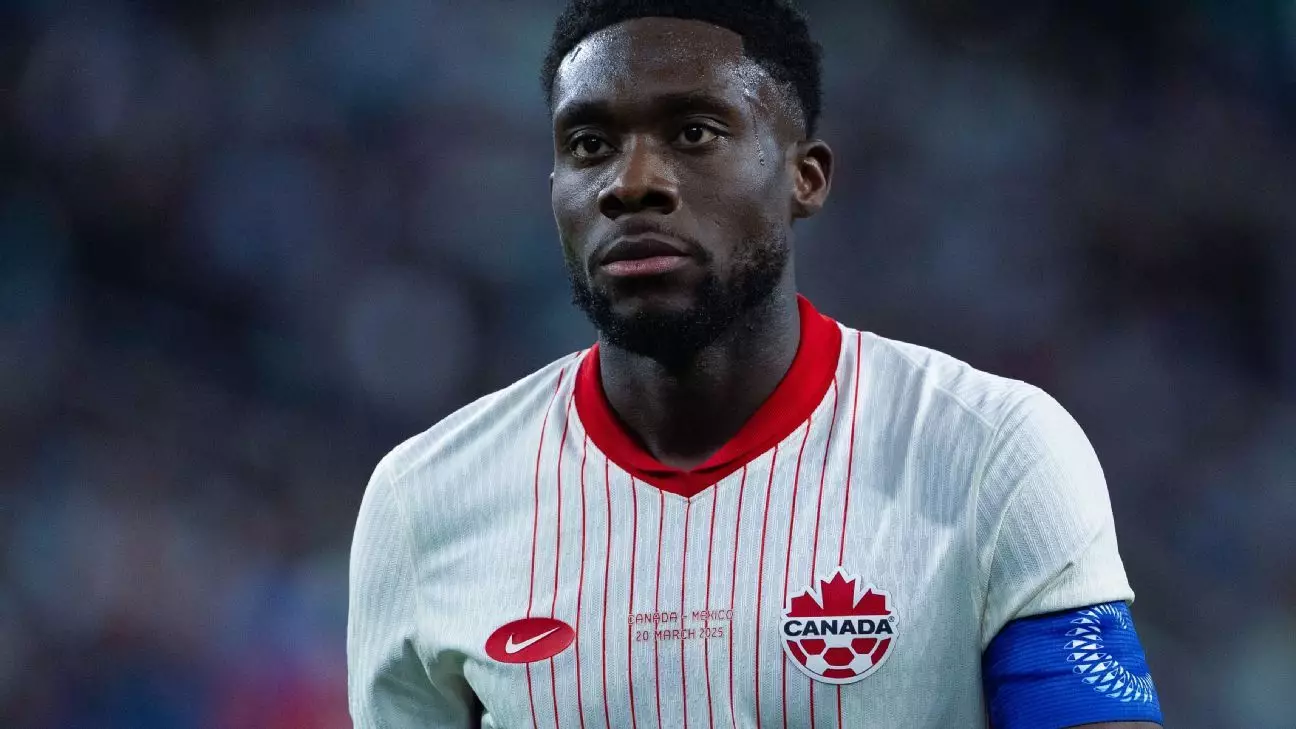In the realm of professional sports, the health and safety of players should remain the foremost priority. This principle came under scrutiny following the unfortunate injury of Alphonso Davies during the Concacaf Nations League finals, where he tore his anterior cruciate ligament while representing Canada. The incident has set off a chain reaction, involving his club Bayern Munich’s dissatisfaction with how the Canadian soccer federation managed his medical care post-injury. This situation has not only highlighted the importance of proper medical protocols in sports but has also raised substantial questions about communication and accountability between national teams and club organizations.
A Serious Injury and Its Aftermath
Davies suffered a critical knee injury during a tense match against the United States, which saw Canada clinch third place at the tournament. After the match, he was promptly returned to Bayern Munich, where thorough medical assessments revealed the full extent of his injuries. Surgery followed swiftly, but what came after was an unfolding drama that hinted at deeper issues within the operational dynamics between club and country. Bayern Munich swiftly expressed its outrage, claiming that the Canadian side neglected to provide adequate on-field medical assessments and follow-through care—a serious allegation that carries with it considerable implications for both medical ethics and player welfare.
Responses: Defenses & Accusations
Canada Soccer has defended its actions, asserting that all necessary care protocols were strictly adhered to. They cited medical documentation and communication logs claiming that updates were consistently shared with Bayern Munich throughout the tournament. This rebuff underscores the critical nature of transparency in sports medicine and the requirement for teams to communicate effectively, especially when dealing with a player’s health. However, the reality that emerges from this back-and-forth suggests a fundamental breakdown in cross-organizational communication, highlighting a poignant lesson for both national federations and club teams on the importance of setting clear expectations regarding player welfare.
The Legal Ramifications
Bayern Munich’s insistence on a thorough investigation and potential legal recourse against Canada Soccer signifies the stakes involved in this situation. The club’s leadership contends that sending an injured player on a lengthy flight without a comprehensive medical assessment is a severe misstep and might constitute negligence. This brings to light a crucial aspect of player management—providing adequate care during games is only half the equation. The sanctity of a player’s health must extend through every phase of their career, and failure to address this can lead to detrimental consequences for all parties involved.
Support for the Player: A Unified Front
In the eye of this storm stands Alphonso Davies, whose focus should be on recovery rather than the bureaucratic squabbles surrounding his injury. Both Bayern Munich and Canada Soccer have pledged to support him during his rehabilitation—a sentiment echoed by Davies’ agent who, after initially voicing discontent, adopted a more diplomatic tone following discussions with Canada’s head coach. This shift in narrative points to the necessity for unity, especially when the stakes are as high as player health and career longevity. It suggests that while conflicts may arise on organizational levels, the athlete’s welfare must always take precedence over institutional grievances.
Ultimately, this incident raises not only questions about care protocols but also highlights the need for improved collaboration among all stakeholders in an athlete’s career—from club coaches to national federation doctors. The priority must always remain squarely on the player’s well-being, ensuring that similar circumstances do not repeat. By fostering open dialogues and establishing robust frameworks for care and communication, all organizations involved in a player’s career can work collectively toward a common goal: the health and success of their athletes.
